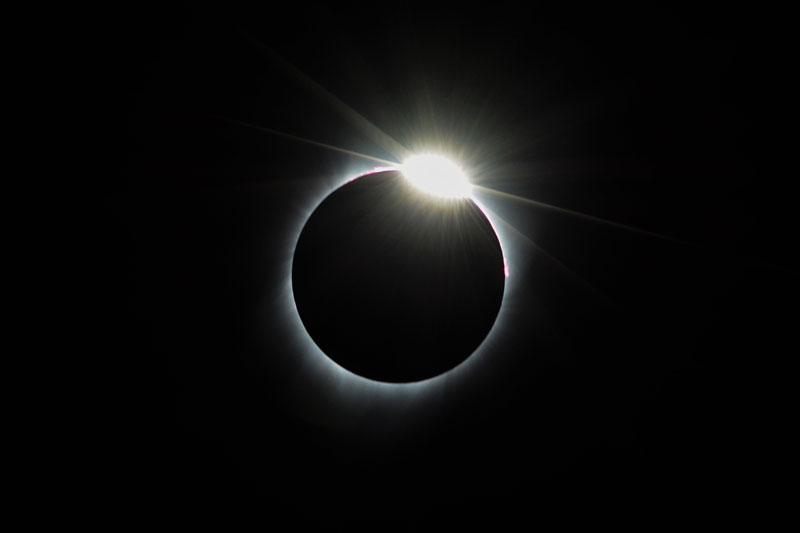SCHIESS: Observing wildlife during the eclipse
Published at
“Awesome,” is the only word that comes to mind as I think back on my experiences on Eclipse Day 2017. I really wanted to see and study the effect of totality on the birds and animals in my backyard from a patch of sunflowers.
I had decided that I would only get pictures when the sun was totally or near-totally covered by the moon and would observe nature and temperatures before and after totality.
The finches, especially the American goldfinch, were wolfing down the ripening seeds while the hummingbirds were feeding on the hollyhocks up to an hour before the moon attack the sun. Just before the moon started eating away the golden orb, all the birds stopped their feeding and perched on some dry willows next to the sunflowers. Their soft calls were replaced by alarm and distress calls as the moon pulled the cover over the sun.

But the bees increased their pollen and nectar collecting from the flowers. That might have been because the birds had left or they might have felt that nighttime was coming and their daily quota had not been met. They were in a hurry.
The Cedar waxwings were busy gobbling down the chokecherries from the nearby bushes with the robins trying to outdo them, but the humans were too close for the starlings to join in the fray. Just before totality they moved into the thickest cover.

After watching the birds for an hour, I made my way back to the snack-laden tables surrounded by 30 guests on my back lawn.
As the moon ate away at the sun, the temperature left an early high of 71 degrees and started dropping and jackets were donned by many of the women. As the eclipse neared totality the guests moved to the road to watch the 360 degree sunset and I noticed how intense the shadows had become. It was time to grab the camera and within 20 seconds the shadows turned to darkness. Cheers from four groups within hearing range erupted but the birds were quiet. Siesta time for them — forced or not.
The aurora around the moon showing Bailey’s beads and then as the sun peeked out about one degree and a six-rayed diamond ring was created. I had recorded the eclipse in totality and the day was a success.

Three bats flying around the yard headed back for cover as the birds began flying around and looking for food again; almost relieved that it was a very short night.
In visiting with the humanoids some of them had a choking sensation while others felt a slight queasiness but all felt the “damp cold” air at totality. A check of the thermometer revealed 59 degrees — a drop of 12 in less than 30 minutes.
A closer check of the sunflower patch showed a decrease in bees but all of the bird numbers had increased and their calls were much softer than during the beginning of the eclipse. The sunflowers did not move — they knew where the sun was supposed to be.

My research included an article by Eric Adler where he quotes Elliot Tramer, a professor of biology and director of environmental sciences at the University of Toledo in Ohio. “There isn’t much known. How often does a scientist who is studying animal behavior, find himself or herself in the eclipse zone or has the free time or money to get there.”
The California Academy of Sciences is asking the public to record what they see as part of its project called “Life Responds.” It is asking the public to go to their iNaturalist app and follow directions, which includes making at least three observations — one a half-hour before totality, another during totality and a third after totality.
Pictures and observations are on their way — bring on another eclipse. I might have to visit Texas is a few years. Awesome!!!
Living the Wild Life is brought to you by The Healing Sanctuary.


